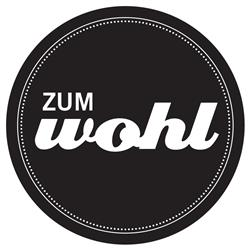Protection of organic brands – ZUM wohl
The case: ‘Biogena Naturprodukte’, an Austrian manufacturer of food supplements, registered the following organic brand for foodstuffs in Austria:

The sign could not be protected as a Union trade mark. In general, ’Wohl’ in English means ‘well-being’ and ‘zum” means ‘for’. It merely states that the foodstuffs designated by it contribute to the physical and mental well-being of consumers, said the General Court of the European Union. The sign contains a purely laudatory reference used to describe the healthy properties of foodstuffs. Such a sign cannot be protected as a trade mark.
Biogena did not agree with that assessment. The spelling alone makes it clear that the German word ‘wohl’ cannot be understood as a noun in the sense of ‘well-being’; ‘wohl was deliberately written in lower case and was therefore an adjective. As an adjective in German it simply means ‘probably’. Therefore, the words do not say anything about foodstuffs.
The Court of First Instance countered that the sign, as conceived by Biogena, would mean ‘for probably’ in the German language. That clearly makes no sense. However, the same phrase, correctly written as ‘zum Wohl’, is understood by the German public as ‘for the well-being’ in the sense of ‘for the benefit. The consumer recognises the spelling error and therefore does not attach importance to the incorrect spelling. Rather, he or she will simply perceive a laudatory advertising message conveyed by the German expression ‘zum Wohl’.
However, Biogena also referred to the fact that it was precisely the figurative elements that made the mark individual and registrable. In its analysis, however, the Court pointed out that even the figurative elements emphasised the promotion of the intrinsic qualities of foodstuffs: The black circular background and the circles constituting the outline correspond to a basic geometric shape as well as to standard borders. These elements could not therefore add distinguishing features to the sign. Likewise, the colours black and white are frequently used to attract consumers’ attention. The difference in size between the two word elements as well as the different typefaces used for those two elements cause the consumer’s attention to be drawn to the word ‘wohl’ and thus to the idea of well-being, while the white colour of the words on a black background merely serves to highlight the words. The difference in size between the words makes it clear that the laudatory word ‘wohl’ is in the foreground. The design of the mark therefore does not detract from the advertising message conveyed by the German expression ‘zum Wohl’.
The fact that the same trade mark had already been registered in Austria was not relevant to its assessment as a Union trade mark, Court of the European Union, 22 June 2017, T-236/16.
Learnings: It is necessary to analyse all elements of a trade mark carefully. If you intentionally mistype words, be aware of how the consumer would understand the sign in an obvious way. Any figurative elements must not support a descriptive meaning of the sign. Additionally, trade mark registrations that have already taken place are not normally decisive in an independent assessment of your mark.
See also: Protection of eco brands – GreenTec